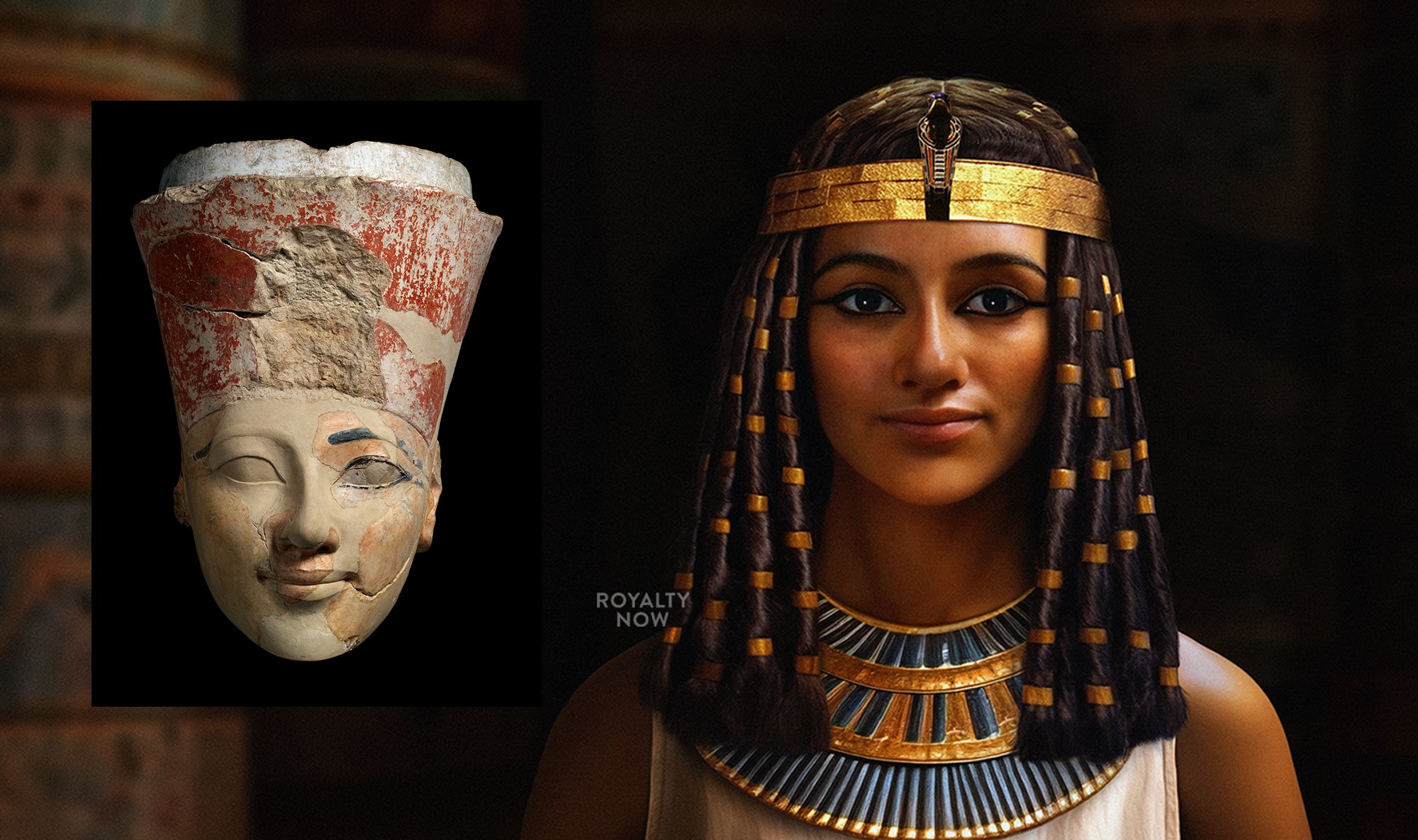What did Hatshepsut look like? With facial re-creations.
Today’s subject is Hatshepsut, a powerful female pharaoh of Ancient Egypt who used effective propaganda to ensure a long and prosperous rule. She ruled 18th dynasty Egypt from c. 1479 – 1458 BCE.
But what did she really look like?
Reviving the faces of ancient Egypt is difficult - Egyptian art served a very different purpose than it does today. While rulers 500 years ago depicted themselves fairly faithfully, to preserve their image for future generations, Egyptian art was not meant to truly represent the figure at all, but rather the power and idea behind the ruler.
These ancient Egyptian portraits also depict their subjects in the prime of their life - thin, and youthful, even working from a grid system that would result in each subject looking mostly the same. Some rulers would even rework statues, just borrowing them from their predecessors and slapping on a new name. These idealized statues represented perfection, so any individualistic features were thought to ruin that perfection.
Knowing all this, is it possible to get close to what Hatshepsut really looked like? We do have a few clues.
Although it’s disputed, researchers believe they have found the mummy of Hatshepsut. She was found in tomb KV60, in the East Valley of the Kings. Her body was curiously removed from its intended location, the magnificent tomb that Hatshepsut built for herself - Deir al-Bahari. The identification of the mummy as Hatshepsut is still disputed, so keep that in mind.
Based on the dimensions of her sarcophagus, she was about 5 feet tall, and died around the age of 50. By the time she died, she was heavy and balding, suffering from diabetes and bone cancer, probably because of a carcinogenic skin cream she had been using.
In terms of actual facial features, we have dozens of statues of Hatshepsut, all looking really consistent. I actually superimposed her mummy with the statue images, and the proportions surprisingly matched up.
But the statues are missing some depth, and distinctive features - so I’ve added some from her relatives - the mummies of her Half brother/husband, and father show prominent cheekbones and deep set eyes, with the same wide mouth as Hatshepsut.
I’m going to depict Hatshepsut in her prime, just as the ancient Egyptians did in these images. And while we may not be able to get to her true face, we do know what she would have worn. Egyptian women often wore plain sheath dresses made of undyed linen. Of course, the wealthy would have more ornamentation, wearing large collar necklaces, bracelets, and earrings.
An example of Ancient Egyptian clothing (this is men’s clothing, but women’s shared the same color and cut).
Kohl was used to elaborately line the eyes and eyebrows, and red ochre was used as blush and lipstick.
Examples of Ancient Egyptian Wigs.
My favorite thing about creating Hatshepsut was her amazing wig. Egyptians would wear elaborate wigs, made from real human hair. Many elite women would shave their heads entirely and wear wigs for almost all occasions. These were arranged into elaborate twists or braids, and ornamented with gold. During Hatshepsut’s reign, a thick, shoulder length wig that was stiffened with beeswax was very popular. Even as she aged and lost some of her hair, this loss wouldn’t have been noticeable to the people around her, because she would have always been wearing a wig.






